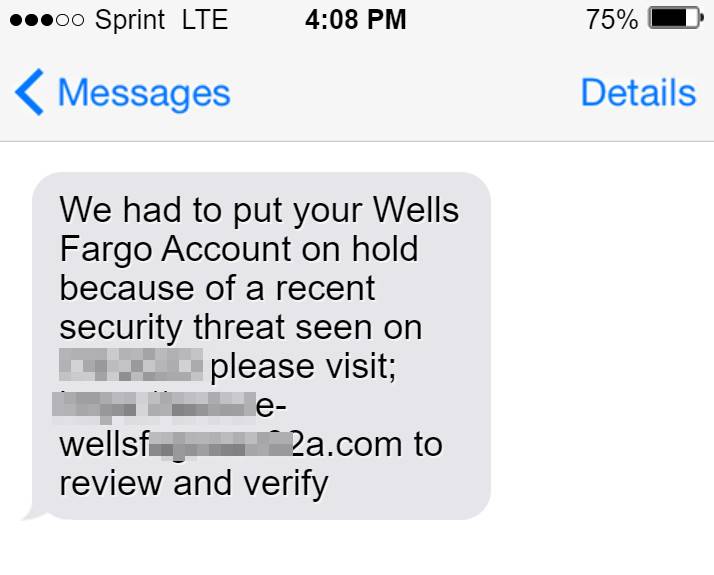If you are a Wells Fargo customer, you may have received a text message or email claiming that your account has been locked due to a security threat and asking you to click on a link to verify your identity. Beware, this is a phishing scam that aims to steal your personal and financial information.

What is the Wells Fargo Account Locked Scam?
The Wells Fargo Account Locked Scam is a type of phishing scam that targets Wells Fargo customers. Phishing is a fraudulent attempt to obtain sensitive information such as usernames, passwords, account numbers, or credit card details by impersonating a legitimate entity.
The scammers send out text messages or emails that look like they are from Wells Fargo, using the bank’s logo and name. The messages claim that there has been a security breach or suspicious activity on your account and that you need to verify your identity by clicking on a link. The link leads to a fake website that mimics the Wells Fargo login page, where you are asked to enter your username, password, and other personal or financial information. If you do so, the scammers will have access to your account and can use it for fraudulent purposes.
How does the Wells Fargo Account Locked Scam work?
The Wells Fargo Account Locked Scam works by exploiting the fear and urgency that people feel when they receive a message about their account being compromised. The scammers hope that you will not notice the red flags in the message, such as spelling errors, grammatical mistakes, or suspicious links. They also hope that you will not check the sender’s phone number or email address, which are usually spoofed or fake.
The scammers use various techniques to make their messages look convincing, such as:
- Using the Wells Fargo logo and name to create a sense of legitimacy and trust.
- Using personalized greetings or salutations to make you think that the message is meant for you.
- Using emotional triggers such as fear, anxiety, or curiosity to make you act quickly and impulsively.
- Using fake URLs that look similar to the real Wells Fargo website, but have slight variations or misspellings.
- Using fake security certificates or padlocks to make you think that the website is secure and encrypted.
What to do if you have fallen victim?
If you have fallen victim to the Wells Fargo Account Locked Scam, you should take the following steps as soon as possible:
- Contact Wells Fargo immediately and report the incident. You can call their customer service at 1-800-869-3557 or visit their website at https://www.wellsfargo.com/privacy-security/fraud/report/.
- Change your password and security questions for your Wells Fargo account and any other accounts that use the same credentials.
- Monitor your account activity and statements for any unauthorized transactions or charges. If you notice any, dispute them with Wells Fargo and your credit card issuer.
- Check your credit reports for any signs of identity theft or fraud. You can get a free copy of your credit report from each of the three major credit bureaus (Equifax, Experian, and TransUnion) once a year at https://www.annualcreditreport.com/.
- Consider placing a fraud alert or a credit freeze on your credit files to prevent new accounts from being opened in your name without your permission. You can learn more about these options at https://www.consumer.ftc.gov/articles/0497-credit-freeze-faqs.
- If you suspect your device is infected with malware, run a free antivirus scan with Malwarebytes Anti-Malware Free.
Conclusion
The Wells Fargo Account Locked Scam is a phishing scam that tries to trick you into giving away your personal and financial information by pretending to be from Wells Fargo. The best way to avoid falling for this scam is to be vigilant and skeptical of any unsolicited messages that ask you to click on a link or provide sensitive information. Remember, Wells Fargo will never contact you via text message or email to ask for your username, password, account number, PIN, or other confidential information. If you are unsure about the legitimacy of a message, contact Wells Fargo directly using their official phone number or website.










